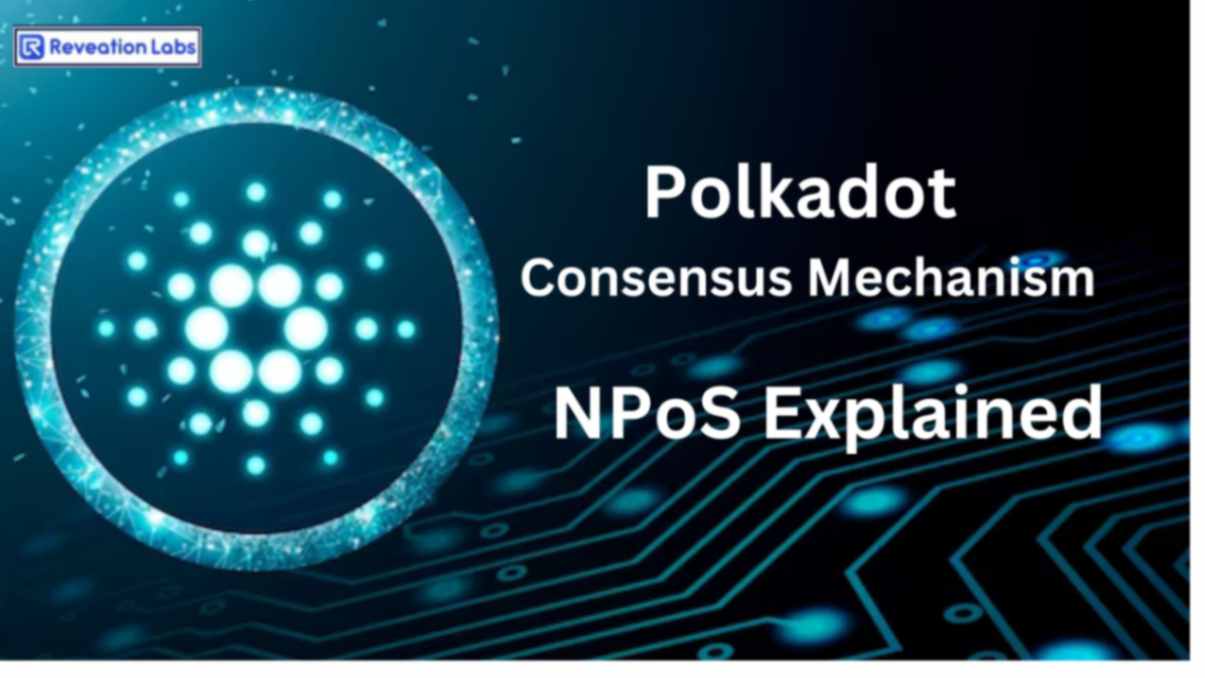Jhansi Pothuru
Mon Sep 18 2023


In the ever-changing world of blockchain technology, Polkadot stands out as an exciting platform with its unique way of reaching agreements. As the Polkadot's core structure depends on Nominated Proof-of-Stake (NPoS), a consensus mechanism that not only ensures security and scalability but also fosters a vibrant, interconnected ecosystem of blockchains.
In this blog, we'll dive deep into the technical details of how Polkadot's NPoS works to achieve these important objectives.
Need For a New Consensus Mechanism
Before we get into NPoS, it's important to understand the challenges traditional blockchains face. Networks like Bitcoin and Ethereum use Proof-of-Work (PoW) and Proof-of-Stake (PoS) mechanisms, respectively. While these have served the blockchain space well, they come with their own set of limitations, including energy inefficiency, slow transaction speeds, and scalability issues.
Polkadot, founded by Dr. Gavin Wood, one of Ethereum's co-founders, seeks to address these limitations. NPoS emerged as the answer to Polkadot's quest for a more efficient, scalable, and secure consensus mechanism.
Nominated Proof-of-Stake (NPoS) Explained
At the core of NPoS are three primary roles: Nominators, Validators, and Collators.
1. Nominators:These are Polkadot users who hold DOT tokens and participate by selecting Validators to support. Nominators play a crucial role in securing the network and receive a share of the rewards earned by the Validators they nominate.
2. Validators: Validators are responsible for producing new blocks and ensuring the security and validity of transactions. To become a Validator, a user must "bond" a significant number of DOT tokens as collateral. Validators earn rewards for their efforts but risk losing their bonded DOT if they act maliciously or fail to validate transactions correctly.
3. Collators: Collators, on the other hand, are responsible for collecting and packaging transactions into blocks for the Validators to confirm. They play a vital role in maintaining the efficiency and speed of the network.
How NPoS works?
Here's how NPoS works in practice:
1. Nominator Selection: Nominators choose which Validators they trust by "staking" their DOT tokens, thereby nominating them. This nominating process helps create a robust network with trusted Validators.
2. Validator Selection: Validators are selected based on the number of DOT tokens bonded to them by Nominators. The more tokens a Validator has bonded, the higher its chances of being selected to produce new blocks.
3. Block Production: Validators take turns producing new blocks in a round-robin fashion. During their turn, they must include transactions and validate their authenticity. Collators assist in this process by collecting transactions and preparing them for inclusion in the block.
4. Rewards and Punishments: Validators receive rewards for their services, but they also face penalties for malicious behavior. Nominators are incentivized to select trustworthy Validators, as their rewards are tied to the performance of the Validators they nominate.
Enhancing Network Security
Polkadot's Nominated Proof of Stake (NPoS) consensus mechanism is designed with robust security features to ensure the integrity and trustworthiness of the network. These security measures include:
1. Economic Incentives:
Validators within the Polkadot ecosystem are required to put up a significant stake in the form of bonded DOT tokens. This stake serves as a powerful economic incentive for Validators to act honestly and faithfully. If a Validator participates in malicious activities or tries to exclude the network's security, they could potentially face the consequence of losing their bonded DOT tokens, resulting in significant financial consequences.
2. Nominator Oversight:
Nominators, who support Validators by delegating their DOT tokens, play an essential role in monitoring the Validators' performance. If a Nominator detects any signs of misbehavior, they have the ability to un-nominate the Validator. This act not only helps maintain the network's security but also results in a loss of staked DOT for the underperforming Validator. This self-policing mechanism empowers the community to actively participate in network security.
3. Decentralization:
Polkadot is committed to support a decentralized network environment. NPoS promotes decentralization by encouraging a diverse set of Validators to participate in the consensus process. This diversity reduces the risk of centralization and reduces the possibility of single points of failure, making the network more resistant to attacks.
Enhancing Scalability
Polkadot's NPoS consensus mechanism plays a crucial role in addressing the scalability challenges. Here's how it contributes to achieving scalability:
1. Parallel Chains:
Polkadot's unique architecture consists of a network of interconnected blockchains called parachains. Each parachain operates independently and can process transactions in parallel. This design allows for horizontal scalability, enabling the network to handle a growing number of transactions and smart contracts simultaneously without compromising performance.
2. Shared Security:
A notable advantage of Polkadot's architecture is the concept of shared security. All parachains within the Polkadot network benefit from the collective security provided by Validators. Validators secure not just individual parachains but the entire network. This shared security reduces the need for each parachain to maintain its dedicated security infrastructure, thereby improving efficiency and reducing overhead.
3. Dynamic Sharding:
Polkadot employs a dynamic sharding mechanism that allocates network resources to parachains based on demand. This adaptive resource allocation ensures that valuable network resources are efficiently utilized and not wasted. It allows the network to flexibly allocate resources where they are most needed, ensuring optimal performance and scalability even as the network evolves.
Conclusion
Polkadot's Nominated Proof-of-Stake (NPoS) is a groundbreaking consensus mechanism that addresses the security and scalability issues that are causing difficulty to many blockchain platforms. By fostering a dynamic ecosystem of Nominators, Validators, and Collators, NPoS achieves robust security through economic incentives and decentralization.
Additionally, NPoS contributes to scalability by enabling parallel chains, shared security, and dynamic resource allocation. Polkadot's innovative approach is meant to reshape the blockchain landscape, providing a powerful foundation for decentralized applications and interconnected blockchains.
In summary, Polkadot's NPoS is not just a technical achievement; it's a vital step towards realizing the full potential of blockchain technology, offering a more secure, scalable, and interconnected future.
Why Reveation Labs
We are a team that is technically proficient and simultaneously caring for your business. Our ideology is to provide the latest technologies that suit your business well.
Let’s discuss your requirements!
Give your business the next-gen technology it deserves. Be a part of our family of successful enterprises that work on high-end software solutions.
Experts
In all the latest technologies and developments.
Creative
To innovate the best solutions and pick the right technology for you.
Ethical
To always put you first & respect your business values and procedures.
Dedicated
To meet the deadlines and help you until the very end and beyond.
Approachable
For all your business needs and queries at any point of time.
Transparent
In our ways of working.




